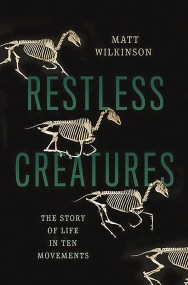Promotion
Use code MOM24 for 20% off site wide + free shipping over $45
Unique
The New Science of Human Individuality
Contributors
By David Linden
Formats and Prices
Price
$17.99Price
$22.99 CADFormat
Format:
- ebook $17.99 $22.99 CAD
- Hardcover $30.00 $38.00 CAD
- Audiobook Download (Unabridged)
This item is a preorder. Your payment method will be charged immediately, and the product is expected to ship on or around September 29, 2020. This date is subject to change due to shipping delays beyond our control.
Also available from:
Inspired by the abundance of unique personalities available on dating websites, a renowned neuroscientist examines the science of what makes you, you.
David J. Linden has devoted his career to understanding the biology common to all humans. But a few years ago he found himself on OkCupid. Looking through that vast catalog of human diversity, he got to wondering: What makes us all so different? Unique is the riveting answer. Exploring everything from the roots of sexuality, gender, and intelligence to whether we like bitter beer, Linden shows how our individuality results not from a competition of nature versus nurture, but rather from a mélange of genes continually responding to our experiences in the world, beginning in the womb. And he shows why individuality matters, as it is our differences that enable us to live together in groups.
Told with Linden’s unusual combination of authority and openness, seriousness of purpose and wit, Unique is the story of how the factors that make us all human can change and interact to make each of us a singular person.
Genre:
-
"Linden neither falters nor apologizes. . . . That's the kind of clarity we need more of in popular science books like this."New York Times Book Review
-
"Very welcome".Clare Wilson, New Scientist
-
"A master at explaining tricky concepts, David Linden has pulled together impressive strands of radical research from genetics to sexuality to our food selection, peppered with amusing anecdotes. We may know who we are, but we should be more conscious of judging others. This book will provoke a fruitful debate."György Buzsaki, author of The Brain from Inside Out
-
"Bucking the currents of predetermination arising from personal genomics and biomarkers, David Linden examines the most fascinating aspect of biology -- everyone is different. Read Linden's book to learn how and why we are all unique."R.Douglas Fields, author of Electric Brain
-
"A sturdy, scientifically grounded, and anecdotally engaging study of the factors that shape us."Kirkus
-
"I'm not average, and neither are you. In a fascinating new book, Linden explains how we become our individual selves -- leaving behind the stale concept of 'nature versus nurture' to reveal a recipe based on a broad range of experiences and predispositions, spiced with a dash of just plain luck. Informative and fun to read!"Sandra Aamodt, author of Welcome to Your Brain
-
"Linden takes us on a colorful journey through our dreams, memories, and senses, exploring how social experience and genes interact to shape each of us as individual human beings. Along the way he combines personal stories, real world analogies, current scientific research, and his own insights to confront the challenging topics of race, sex, gender, and intelligence. A thoughtful, fresh and enjoyable look at ourselves."Robin Lester, professor of neurobiology at University of Alabama at Birmingham
- On Sale
- Sep 29, 2020
- Page Count
- 336 pages
- Publisher
- Basic Books
- ISBN-13
- 9781541698871
Newsletter Signup
By clicking ‘Sign Up,’ I acknowledge that I have read and agree to Hachette Book Group’s Privacy Policy and Terms of Use







